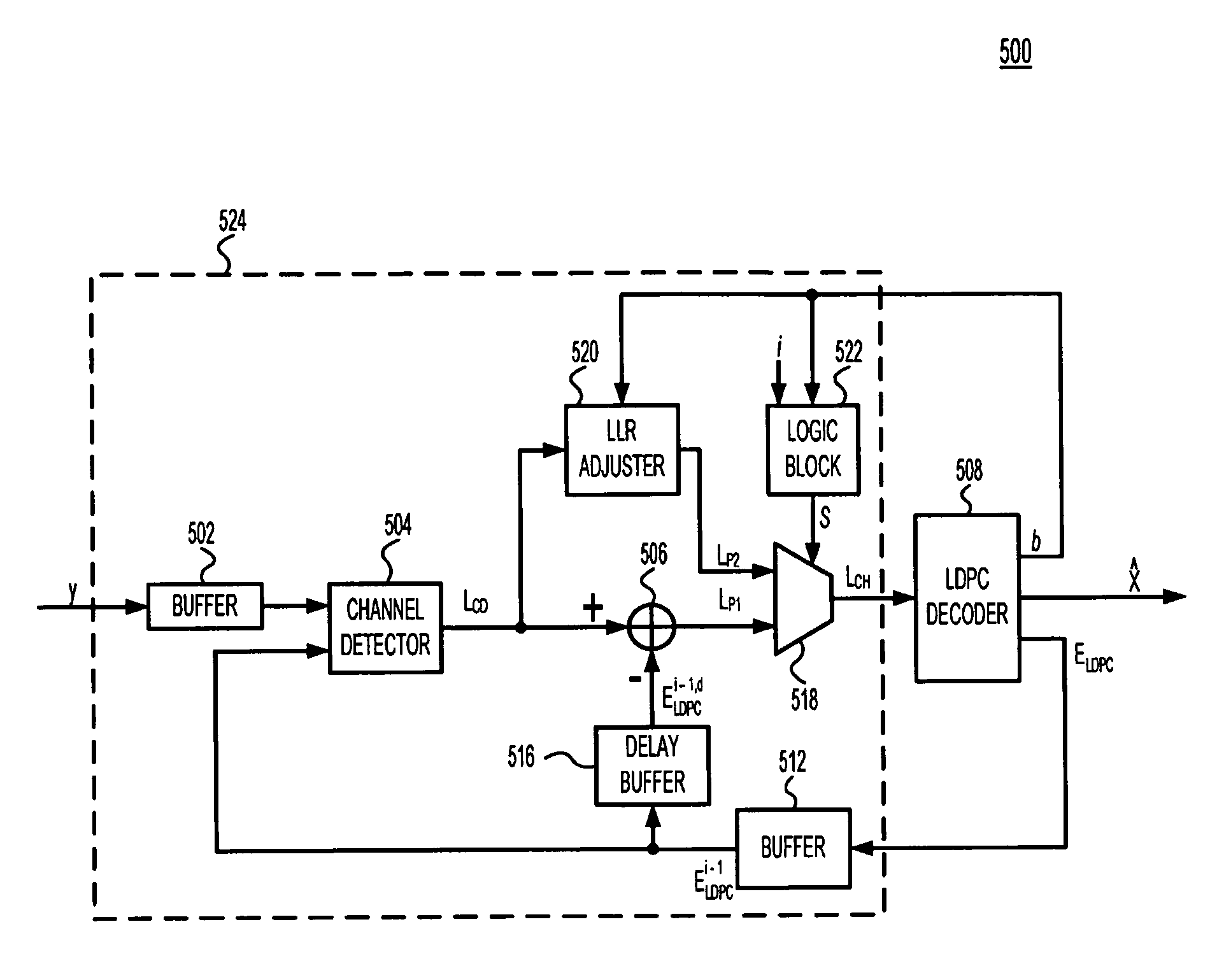Turbo-equalization methods for iterative decoders
a decoder and iterative technology, applied in the field of data encoding methods, can solve problems such as channel errors and reduce throughput, and achieve the effect of improving throughput and reducing channel errors
- Summary
- Abstract
- Description
- Claims
- Application Information
AI Technical Summary
Benefits of technology
Problems solved by technology
Method used
Image
Examples
Embodiment Construction
[0016]FIG. 1 is a block diagram of a communications system 100 that utilizes LDPC coding. Data source 102 generates a set of bits known as an original information word 104. LDPC encoder 106 encodes original information word 104 to generate codeword 108, also known as the channel input codeword. LDPC encoding is discussed in greater detail below. Encoder 106 then sends codeword 108 through noisy channel 110, e.g., a hard-drive platter.
[0017]Channel detector 112 receives codeword 108 as a set of values y from noisy channel 110. Channel detector 112 converts the received values y into a set of log-likelihood ratio (LLR) values LCH. An LLR value comprises (i) a sign bit that represents the decoder's best guess as to the one-bit hard-decision value indicated by the corresponding value y and (ii) one or more magnitude bits that represent the decoder's confidence in the hard decision. For example, channel detector 112 might output each LCH value as a five-bit LLR, where the most-significan...
PUM
 Login to View More
Login to View More Abstract
Description
Claims
Application Information
 Login to View More
Login to View More - R&D
- Intellectual Property
- Life Sciences
- Materials
- Tech Scout
- Unparalleled Data Quality
- Higher Quality Content
- 60% Fewer Hallucinations
Browse by: Latest US Patents, China's latest patents, Technical Efficacy Thesaurus, Application Domain, Technology Topic, Popular Technical Reports.
© 2025 PatSnap. All rights reserved.Legal|Privacy policy|Modern Slavery Act Transparency Statement|Sitemap|About US| Contact US: help@patsnap.com



